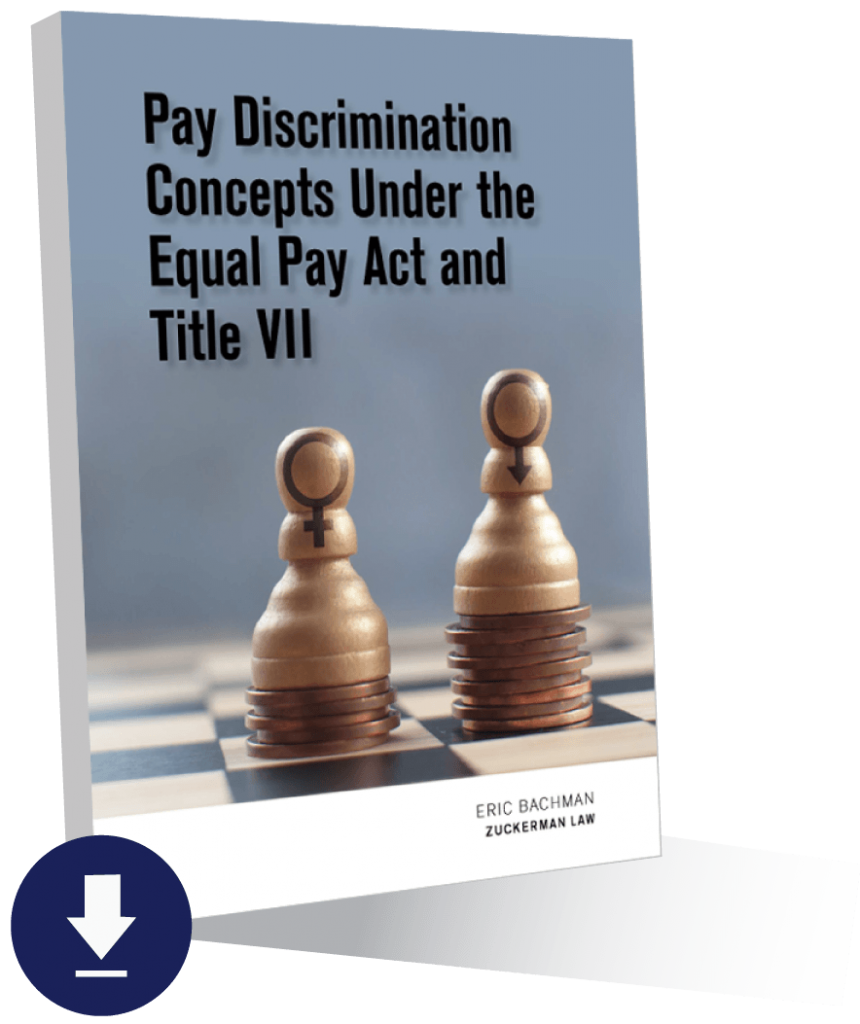Although Congress passed the Equal Pay Act (EPA) in 1963, its goal of eradicating pay discrimination among men and women at work is still as important today as it was 50 years ago. Bachman Law founder Eric Bachman published this free e-guide to provide plain-English resources for women facing unequal pay in the workforce.
To this day, the median salary for women working full-time is approximately 80% of what men earn. Put another way, women are working for free about 10 weeks of the year compared to their male colleagues.
What is the Equal Pay Act?
The Equal Pay Act requires that men and women receive equal pay for equal work in the same workplace. According to the EEOC, “the jobs need not be identical, but they must be substantially equal.”
And a court will look to the content of the job you do, not the job title, to decide if the jobs are “substantially equal.” The EPA covers all kinds of pay, including:
- salary,
- overtime pay,
- bonuses,
- stock options,
- vacation and holiday pay,
- reimbursement for travel expenses, and
- benefits
“If there is an inequality in wages between men and women,” the EEOC dictates that “employers may not reduce the wages of either sex to equalize their pay.”
Plain-English answers to pay discrimination questions
The free e-guide provides a wealth of information and answers to common questions about pay discrimination, including:
- How do you prove pay discrimination?
- How does the EPA relate to Title VII and other anti-discrimination laws?
- What remedies are available?
- What steps can I take to combat discriminatory pay practices?
Hiring an experienced employment discrimination lawyer
Hiring a proven and effective advocate is critical to obtaining the maximum recovery in an employment discrimination case. To schedule a preliminary consultation, click here or call us at (202) 769-1681.
